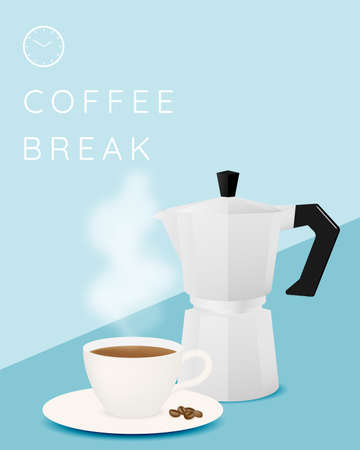Introduction to Coffee at Home
If you’re just setting out on your coffee journey, a warm welcome to the world of home brewing. Over the past decade, Britain’s relationship with coffee has blossomed, moving well beyond instant granules and high-street chains. Today, making a proper cup at home is more than just a trend—it’s part of our daily ritual and an expression of personal taste. While tea may still reign supreme in some households, many of us now start our day with a freshly brewed coffee, relishing both the process and the flavour.
Brewing your own coffee offers a satisfying sense of accomplishment and gives you complete control over what goes into your cup. From selecting beans that suit your palate to experimenting with different brewing methods, making coffee at home allows for endless customisation—without paying café prices every time you fancy a decent brew. In this guide, we’ll take you through everything you need to know as a complete beginner, so you can confidently make your own cuppa that rivals any local café.
2. Essential Equipment and Kit
If you’re just starting your coffee journey at home, having the right equipment is key to a satisfying brew. Here’s a straightforward overview of the basic tools and gadgets you’ll need, with some UK-specific recommendations to help you make informed choices.
Coffee Makers: Choosing Your Brew Method
There are several popular ways to brew coffee at home, each requiring different equipment. Here’s a quick comparison:
| Equipment | Description | Popular UK Brands/Models |
|---|---|---|
| Cafetière (French Press) | Classic, simple immersion brewer; produces rich, full-bodied coffee. | Bodum Chambord, John Lewis Anyday Cafetière |
| Filter Coffee Machine | Convenient for larger batches and consistent flavour; easy to use. | Melitta Look IV Therm Timer, Russell Hobbs Buckingham Filter Coffee Maker |
| AeroPress | Compact, versatile and fast; great for single cups or travel. | AeroPress Original, Barista & Co Twist Press |
| Moka Pot (Stovetop Espresso Maker) | Makes strong, espresso-style coffee on the hob; iconic Italian design. | Bialetti Moka Express, La Cafetière Classic Espresso |
| Pod Machine | Ultimate convenience with pre-portioned pods; variety of flavours. | Nespresso Vertuo, Tassimo by Bosch Vivy 2 |
Grinders: Freshness Matters
Coffee tastes best when ground just before brewing. There are two main types of grinders:
| Type | Description | UK Picks |
|---|---|---|
| Burr Grinder | Consistent grind size; ideal for all brewing methods. | Wilfa Svart Aroma, Sage Smart Grinder Pro |
| Blade Grinder | Budget-friendly but less consistent; fine for cafetière or filter coffee. | Bodum Bistro Blade Grinder, Salter Electric Coffee Grinder |
Scales and Kettles: Precision for Better Flavour
| Accessory | Description/Use | Recommended Models (UK) |
|---|---|---|
| Digital Scales | Helps measure coffee and water accurately for repeatable results. | Dilwe Digital Kitchen Scales, Hario V60 Drip Scale |
| Kettle (ideally with gooseneck spout) | Makes pouring steady and controlled—important for pour-over methods. | Swan Nordic Gooseneck Kettle, Fellow Stagg EKG (if budget allows) |
Coffee Storage: Keeping Beans Fresh in the UK Climate
The UK’s damp climate can affect bean freshness. Store beans in an airtight container away from light and heat. A vacuum-sealed canister (like Airscape) or even a simple Kilner jar works well.
A Starter’s Checklist: The Essentials at a Glance
- Cafetiere/filter machine/AeroPress/Moka pot (choose one to start)
- Coffee grinder (preferably burr type)
- Digital kitchen scales
- Kettle – ideally electric with temperature control/gooseneck spout
- Airtight storage jar or canister
Investing in good quality kit not only improves your brews but also makes the process enjoyable. In the next section, we’ll cover how to select the right beans for your taste preferences and where to find them locally across the UK.

3. Choosing Your Coffee: Beans, Blends, and Roasts
If you’re new to brewing coffee at home, one of the first steps is understanding how to select the right coffee beans. The world of coffee can seem overwhelming, but a bit of knowledge goes a long way. Here’s how to make sense of your options and find beans that suit your taste.
Understanding Types of Coffee Beans
The two main species you’ll encounter are Arabica and Robusta. Arabica beans are favoured for their smooth, nuanced flavours and lower bitterness—a popular choice in most British cafés. Robusta beans, on the other hand, have a stronger, more bitter taste and higher caffeine content. For most home brewers in the UK, starting with 100% Arabica or an Arabica-dominant blend is a safe bet.
Single Origin vs Blends
Single origin coffees come from one location or farm and offer unique flavours reflecting their region—think fruity Ethiopian or nutty Brazilian. Blends combine beans from different places to achieve balanced and consistent flavour profiles. Many high street brands in Britain use blends for their signature house coffees. If you’re after something adventurous, try a single origin; if you prefer reliability, go for a blend.
Roast Levels Explained
Coffee beans are roasted to different degrees: light, medium, and dark. Light roasts preserve more original bean flavours—often floral or citrusy—but may taste sharper. Medium roasts strike a balance between brightness and body, which many UK drinkers enjoy for everyday cups. Dark roasts develop bold, chocolatey notes with less acidity, perfect for those who like their brew strong and smooth. There’s no right answer—experimenting will help you find your favourite.
Sourcing Quality Coffee in the UK
You can buy quality beans from local independent roasters or well-stocked supermarkets across Britain. Many towns now boast artisan coffee shops that sell bags of freshly roasted beans—ask about their recommendations if you’re unsure where to start. For convenience and variety, online retailers such as Pact Coffee, Hasbean, or Union Hand-Roasted offer delivery across the UK with detailed tasting notes to guide beginners. Always check roast dates (fresh is best) and opt for whole beans if possible—they stay fresher longer than pre-ground coffee.
Tip for Beginners
Start small: buy 250g bags so you can try different types without waste. Keep your beans in an airtight container away from light and heat to maintain their quality.
4. Getting the Basics Right: Water, Ratio, and Grind
If you’re just starting your coffee journey at home, getting these three fundamentals right will set you up for consistently delicious brews. Let’s break down why water quality, coffee-to-water ratio, and grind size matter—and how to get them spot on.
Water Quality: The Foundation of Every Brew
Coffee is over 98% water, so the water you use can make or break your cup. In the UK, tap water varies greatly—hard water can lead to flat-tasting coffee and limescale build-up in your kettle or machine. If your area has hard water (common in London and the South East), consider using a filter jug or bottled spring water for brewing. Soft or filtered water allows the true flavours of your beans to shine through without any odd mineral tang.
Coffee-to-Water Ratio: Precision Matters
Measuring out your coffee and water accurately is key to avoiding weak or bitter cups. For most manual brewing methods (like cafetière, AeroPress, or pour-over), a good starting point is:
| Brewing Method | Coffee (g) | Water (ml) | Ratio |
|---|---|---|---|
| Cafetière (French Press) | 18 | 300 | 1:16.5 |
| Pourover/V60 | 15 | 250 | 1:16.7 |
| AeroPress | 14 | 220 | 1:15.7 |
| Moka Pot (Stovetop) | 16 | 230 | 1:14.4 |
You don’t need fancy scales—kitchen digital scales do the trick nicely. As you gain confidence, tweak these ratios slightly to suit your taste; some prefer their brew a bit stronger or lighter.
The Right Grind Size: Matching Brew Method to Particle Size
The grind size of your coffee beans affects extraction time and flavour. Too fine, and your drink may taste bitter; too coarse, and it’ll be weak and watery. Here’s a quick guide:
| Brew Method | Grind Size Description | Texture Example |
|---|---|---|
| Cafetière/French Press | Coarse | Bread crumbs/Sea salt granules |
| Pourover/V60/Chemex | Medium-coarse to medium-fine | Sugar/Sand-like texture |
| AeroPress (standard method) | Medium-fine | Slightly finer than table salt |
| Moka Pot/Espresso machine* | Fine (Moka) to very fine (Espresso) | Baking flour consistency for espresso; table salt for Moka Pot |
*Note: Espresso requires a burr grinder for consistency; pre-ground espresso is widely available in UK supermarkets but grinding fresh gives better results.
Troubleshooting Common Issues
If your coffee tastes off, check these basics first:
- Bitter? Try a coarser grind or less steeping time.
- Weak? Increase coffee dose slightly or use a finer grind.
- Tastes strange? Switch to filtered/bottled water.
Your Next Steps
Nail these basics before moving onto fancier kit or beans—you’ll be amazed at how much difference they make to every cup brewed at home in Britain.
5. Step-by-Step Brewing Methods
Mastering the art of home coffee brewing might seem daunting, but once you get to grips with a few core methods, you’ll find it both enjoyable and rewarding. Here, we’ll walk through some of the most popular styles found in British homes: cafetière (French press), AeroPress, filter coffee, and moka pot. Each method has its own charm and caters to different tastes and routines.
Cafetière (French Press)
What You Need
A cafetière, coarsely ground coffee, hot water just off the boil, and a stirring spoon.
How To Brew
- Add one rounded tablespoon of ground coffee per mug into your cafetière.
- Pour over hot water (about 200ml per serving) ensuring all grounds are saturated.
- Give it a gentle stir, place the plunger lid on top without pressing down, and let it steep for 4 minutes.
- Slowly press the plunger down and pour straight away for a smooth cup.
AeroPress
What You Need
An AeroPress kit, paper filter, medium-fine ground coffee, and hot water.
How To Brew
- Place a filter in the cap and rinse with hot water. Attach to the chamber and set over your mug.
- Add one heaped scoop of coffee (around 14g).
- Pour hot water up to the number ‘2’ mark, stir briskly for 10 seconds.
- Insert plunger and press down slowly for a rich and clean brew.
Filter Coffee (Drip or Pour-Over)
What You Need
A filter cone or dripper, filter paper, medium ground coffee, and freshly boiled water.
How To Brew
- Place filter paper in your dripper and rinse with hot water to remove any papery taste.
- Add one tablespoon of coffee per cup into the filter.
- Pour just enough hot water to wet the grounds—let them ‘bloom’ for 30 seconds.
- Slowly add more water in circles until you reach your desired amount. Allow all the water to drip through before enjoying.
Moka Pot (Stovetop Espresso)
What You Need
A moka pot, finely ground coffee, and water.
How To Brew
- Fill the bottom chamber with cold water up to the safety valve.
- Spoon finely ground coffee into the filter basket—don’t tamp it down too firmly.
- Screw on the top section tightly and place on a medium hob heat.
- The coffee will gradually fill the upper chamber; when you hear a hissing sound, remove from heat and serve immediately for a strong Italian-style brew popular across Britain’s kitchens.
Tips for Success
No matter which method you choose, always start with fresh beans ground specifically for your device. Use filtered or freshly drawn tap water for best results. Don’t be afraid to experiment with ratios and timings—British preferences vary from light and mellow to bold and intense. With these step-by-step guides, anyone can confidently brew great-tasting coffee at home without fuss or faff.
6. Perfecting Your Brew and Troubleshooting
Refining Your Taste: Learning to Identify Flavours
Once you’ve brewed your first few cups, it’s time to hone your palate. Take a moment to smell the coffee, then sip slowly and let the flavours settle on your tongue. British coffee culture is steadily growing, with more people appreciating notes beyond just ‘strong’ or ‘weak’. Try to notice if your coffee tastes nutty, fruity, chocolatey, or floral. Keep a notebook and jot down what you observe each time. This is not only satisfying but will help you tweak future brews to suit your preferences.
Common Issues and How to Fix Them
Bitter Coffee
If your brew tastes overly bitter, it’s usually down to over-extraction. This means the water has been in contact with the grounds for too long or the grind is too fine. Try shortening your brewing time or using a coarser grind.
Weak or Watery Coffee
If your coffee is lacking body or feels weak, under-extraction might be the culprit. Use a finer grind, increase the brewing time slightly, or add a touch more coffee next time. Remember, tap water quality can affect flavour as well—if you’re in a hard water area of the UK, filtered water may yield better results.
Sour or Sharp Flavours
Sourness often points to under-extraction as well. Ensure your water is hot enough (ideally around 92–96°C), and don’t rush the brewing process.
Personalising Your Cup
The beauty of home brewing lies in making coffee just how you like it. Experiment with different beans from local UK roasters—many offer tasting notes on their packaging. Adjust ratios until you hit your sweet spot; some people prefer a stronger continental-style cup while others opt for something lighter and more subtle. Don’t be afraid to try adding a splash of milk or experimenting with oat or almond alternatives—a nod to Britain’s love affair with milky coffees.
Troubleshooting Checklist
- Check your grind size: Finer for espresso machines, coarser for cafetières.
- Review your water temperature: Too hot can scorch; too cool won’t extract properly.
- Weigh both coffee and water for consistency each time you brew.
- Taste regularly and note changes—sometimes even small tweaks make a big difference.
With patience and curiosity, you’ll soon find yourself making café-quality brews at home that are tailored perfectly for your own taste buds—and perhaps even impressing guests at your next brunch!
7. Enjoying Your Coffee: Tips, Rituals, and Storage
Coffee at Home: A British Take on Daily Rituals
Making coffee at home is not just about brewing; it’s also about savouring the ritual and creating a space to relax. In the UK, coffee time has grown to rival our beloved tea breaks. Many people find comfort in taking a few quiet minutes each morning with their freshly brewed cup, perhaps enjoying the gentle bustle of the kitchen or even stepping out into the garden for a breath of fresh air. Whether you’re reading the news, catching up on emails, or simply watching the rain tap against the window, let your coffee moment be a pause in an otherwise busy day.
Perfect Pairings: Biscuits, Bakes & More
No British coffee break would be complete without something to nibble alongside your brew. Classic accompaniments include buttery shortbread biscuits, oatcakes, or a slice of homemade Victoria sponge. If you prefer something savoury, try cheese scones or even a toasted crumpet. These little extras can elevate your coffee experience and make it feel like a special treat—especially when shared with friends or family.
Recommended Biscuits for Coffee
- Digestives: Subtle sweetness pairs well with most coffees.
- Bourbon creams: For those who like a chocolatey touch.
- Ginger nuts: The spice complements richer roasts beautifully.
Storing Your Beans: Freshness Matters
To keep your coffee tasting its best, store beans in an airtight container away from light, heat, and moisture. Avoid leaving beans in the bag they came in unless it’s resealable and foil-lined. Ideally, use a ceramic or glass jar with a tight seal—keep it in a cupboard rather than on display next to the hob. For most households, buying smaller amounts more frequently ensures fresher brews. Remember: pre-ground coffee loses flavour faster than whole beans.
Pro Tip
Avoid storing coffee in the fridge as fluctuating temperatures and humidity can cause condensation, spoiling both aroma and taste.
Cleaning Your Kit: Consistency is Key
To maintain great flavour (and prolong the life of your equipment), regular cleaning is essential. Rinse out cafetières after every use and wash thoroughly with warm soapy water once a week. For espresso machines or grinders, follow manufacturer instructions—usually this involves running a cleaning cycle or brushing out old grounds. Neglecting cleaning can lead to stale flavours or even damage over time.
Quick Cleaning Checklist:
- Rinse all parts that come into contact with coffee daily.
- Deep clean at least weekly.
- Descale machines monthly if you live in a hard water area.
The Final Sip
Your home coffee ritual should be enjoyable and stress-free. With thoughtful storage and regular kit care, every cup will taste as good as your first—and perhaps become one of your favourite parts of the day.


